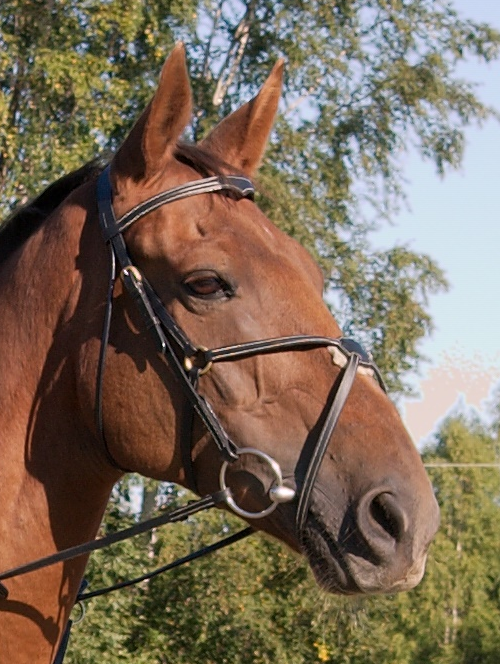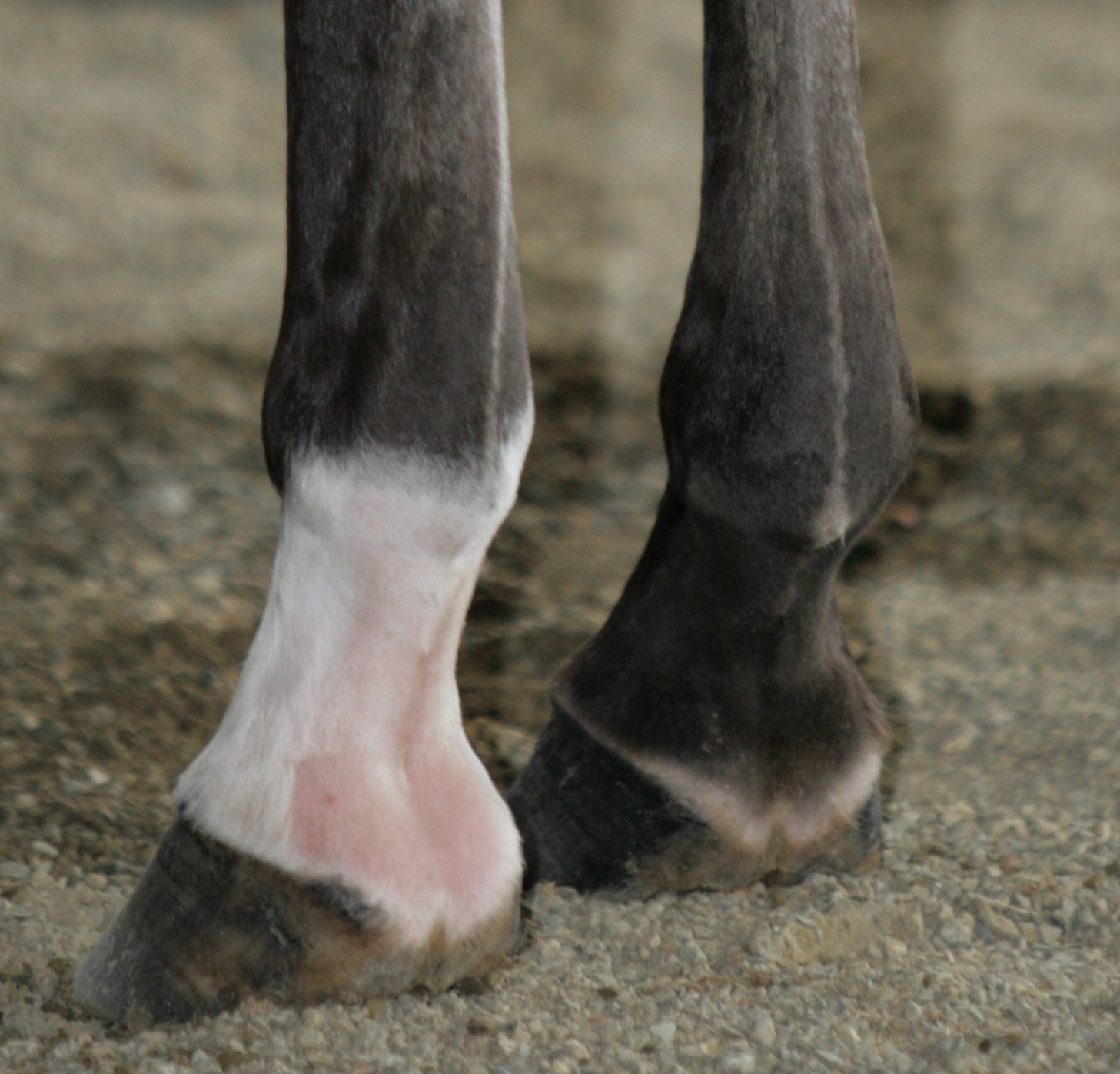Ideally, jumpers will be trimmed similarly to hunters. Because jumpers are judged objectively, however, it is much less of a problem should you choose not to.
Ears
The ears should be clipped so that the edges are smooth and no hair sticks out. Usually, the hair inside the ears is also clipped. In some cases, such as horses with little or very dark-coloured ear hair, clipping the inside might not be necessary. When you are clipping the outer edges of each ear, be sure not to clip off the hair at the very tip of the ear. Removing this "point" of hair will give the ears a strange, rounded shape.
While one might think that removing ear hair is unnecessary, it really does make a difference in how neat the horse looks.
If you do decide to clip your horse's ears, make sure that you use a fly mask when turning out and fly spray around the ears while showing.
For jumpers, trimming the ears is not really necessary if you will always compete in a fly veil.
 |
| Nicely-trimmed ears |
 |
| Hairy ears in need of a trimming |
Jaw
Many horses will grow long hair under the base of the jaw. Not only does this hair make the face look less delicate, but it can also get caught in bridle straps and pull uncomfortably. It is easy to remove this hair with a set of clippers. Make sure not to cut the hair too short or you will end up with a line of trimmed hair against the natural hair of the rest of the face - it should blend and look natural.
Muzzle
The whiskers on the muzzle should be clipped off for a neat appearance. I have yet to witness a horse having trouble in the dark because these whiskers are missing.
Eyebrows
Some people trim the eyebrows (whiskers above the eyes) off completely. I don't feel that this is necessary as these few whiskers do not stand out very much. I also like giving the eyes that little bit of extra protection. If the eye brows are interfering with the horse's eyes or are excessively long, I will trim them down to a more reasonable length.
Bridle path
The bridle path should be clipped, about one to two inches long, just behind the ears where the crownpiece of the bridle sits. The bridle path allows the bridle to sit evenly, makes it easier to bridle the horse and is necessary when braiding the horse.
Tail
For the hunter ring, the tail should never be trimmed at the dock as you would see with dressage horses. Some jumpers will trim the tail at the dock, but it is rare and a natural tail is the way to go. Jumpers' tails are usually banged anywhere from just below the hocks to just above the fetlocks. Hunter's tails usually end around the fetlock area and are usually cut with the aim of achieving a more natural shape.
Legs
How much you should trim the legs depends on the individual horse. Some horses only require the hair at the back of the fetlock to be trimmed, while others grow long hair up to the knee and will need to be trimmed down the back of the entire lower leg.
Thick leg hair can make a horse look coarse and it also makes it more difficult to keep the legs clean. Trimmed legs look neat and make the horse look more delicate.
Legs with white markings are often clipped in order to keep them white. Removing the long, stained hair reveals white hair underneath that can be maintained white with shampoo. The short hair will also not accumulate as much dirt in the warm-up ring.
Hair along the coronet band can also be clipped off if it is very long.



Does anyone ever question why all this shaving and clipping is necessary for showing? - Dare to differ, the hair is there for a protective reason. I am planning to show soon leaving my half thoroughbred hirsuitly intact.
ReplyDelete